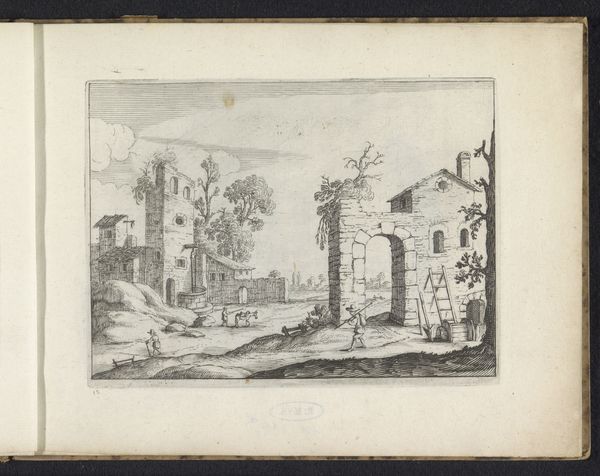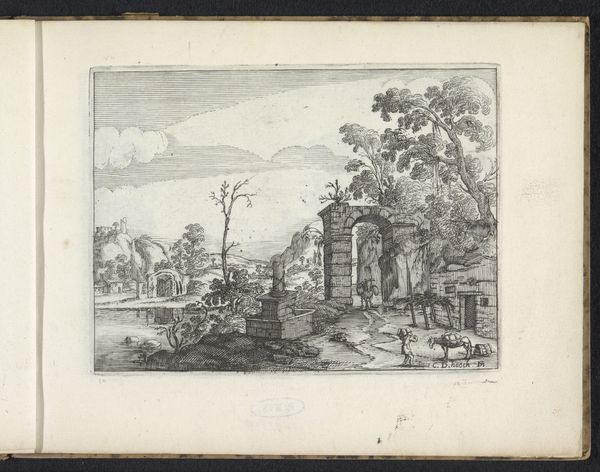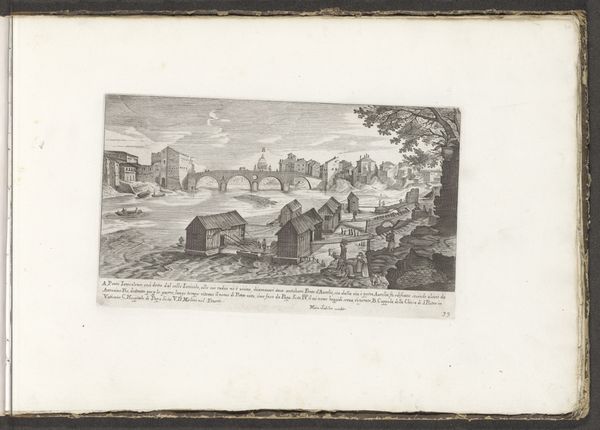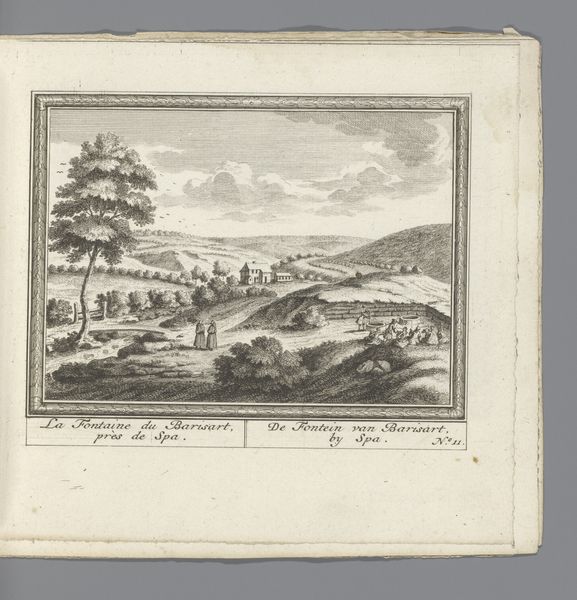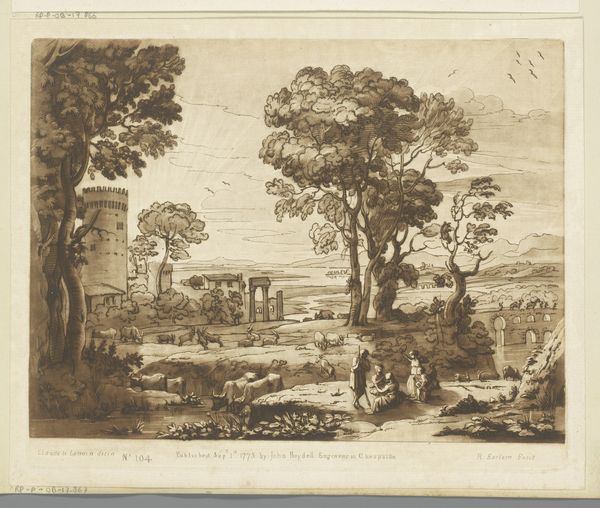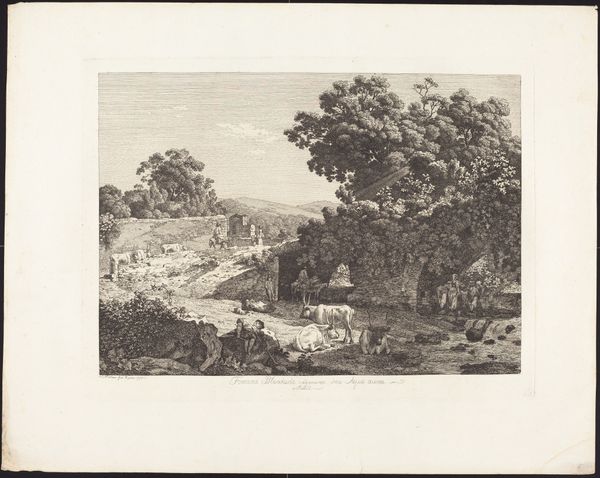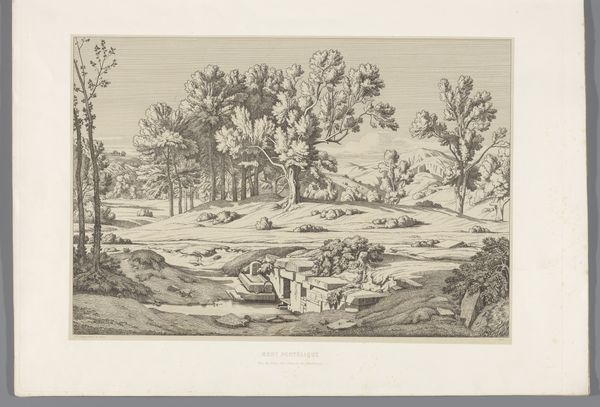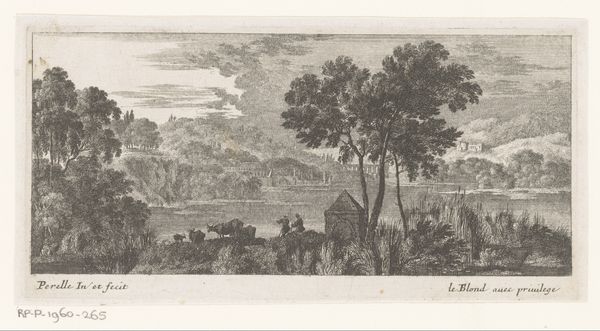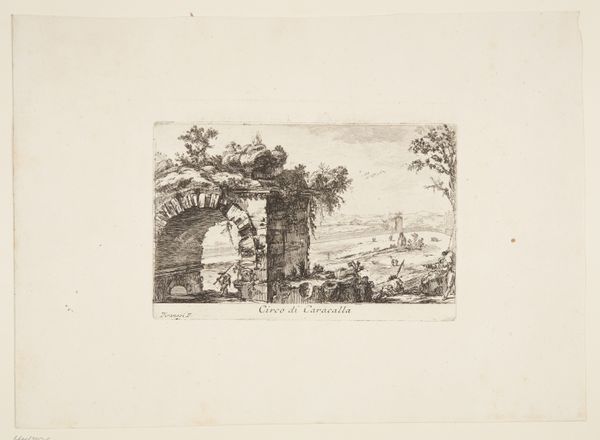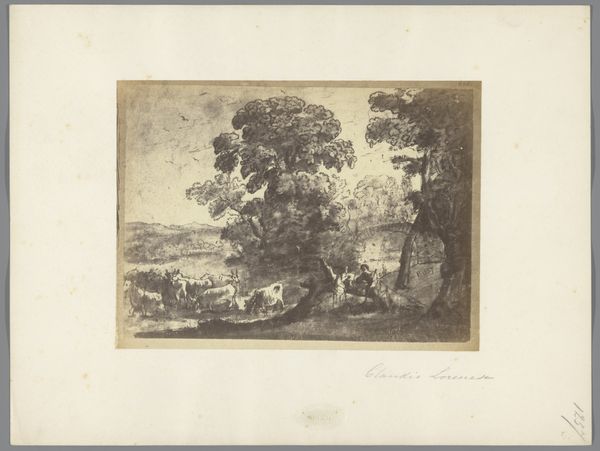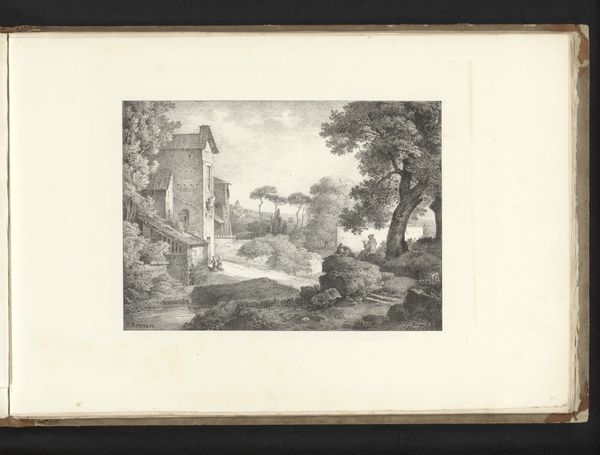
print, etching
#
baroque
# print
#
etching
#
landscape
#
figuration
Dimensions: height 103 mm, width 140 mm
Copyright: Rijks Museum: Open Domain
Curator: Looking at "Landschap met een boerderij," or "Landscape with a Farm," an etching dating roughly from 1610 to 1638, crafted by Charles de Hooch, I’m immediately struck by its serene yet melancholic atmosphere. What are your first impressions? Editor: There's an undeniable tranquility evoked by the repetitive strokes defining shapes and the airy composition; however, what grabs me most is its materiality. It's not just the image itself, but the means of production. Etching, unlike other forms of printing, highlights the engraver's mark, emphasizing labor and skill in its production. Curator: Precisely. This piece reveals much about the era’s social dynamics. Consider the subject matter: a rural setting with figures engaged in everyday activities, suggestive of labor. Editor: And it subtly hints at consumption; this etching would likely have been reproduced and distributed widely. I wonder about the social context surrounding this image, who its intended audience was and what relationship the patron and printer had. Was this print a standalone piece, part of a collection or a book? The details surrounding production affect how we view and understand the landscape portrayed here. Curator: I find the arrangement, the interplay between light and shadow so sophisticated. Hooch organizes depth employing intricate sets of line, generating form in dark accents like those in the vegetation framing the building on the right, directing the eye inward. Note the building itself, it feels so constructed, a set of perpendicular forms oriented to allow entry on more than one level, and that lovely elevated walkway—a touch of formal invention. Editor: It reminds me of vernacular architecture; but let’s dig deeper into the labor aspect here: Hooch wasn't simply capturing a scene but employing skills passed down through generations. Where did he learn his craft? And what other kinds of images did this print compete with? Was this kind of landscape design in competition with traditional oil paintings? What type of printing press did Hooch and the printer work on? I think all of these questions invite us to understand the art beyond purely formal grounds. Curator: A fruitful line of inquiry, to be sure. This landscape allows us to dwell in these imagined moments and ponder Hooch's command over line and form and how deeply connected they are to the human world depicted in this piece. Editor: Ultimately, studying "Landscape with a Farm," opens up discussions about artistic choices but equally engages with how prints can serve not only aesthetic roles but economic, social, and intellectual ones within a complex society.
Comments
No comments
Be the first to comment and join the conversation on the ultimate creative platform.
